Make It Do – Sugar Rationing in World War II
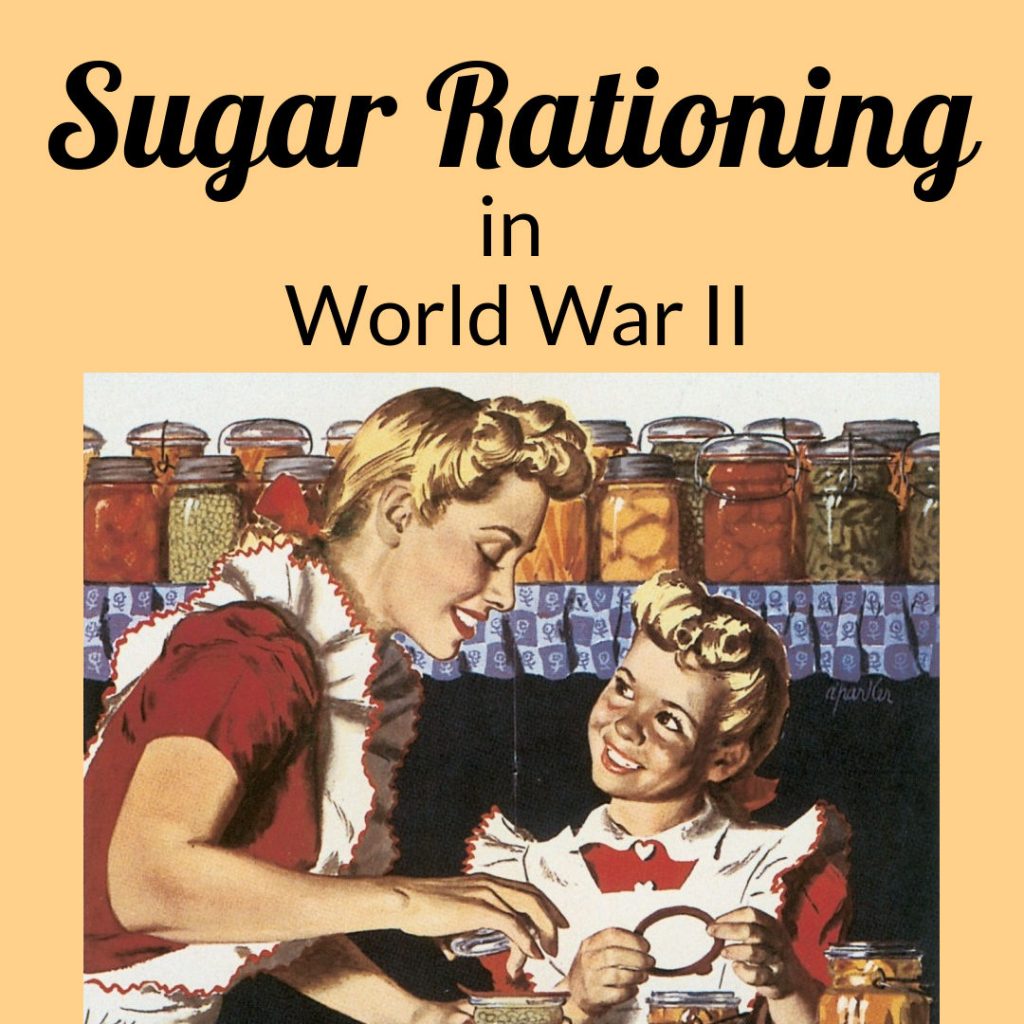
What could be more American than Hershey bars, homemade cookies, and birthday cake? During World War II, these items were hard to come by in the United States.
Short on Sugar
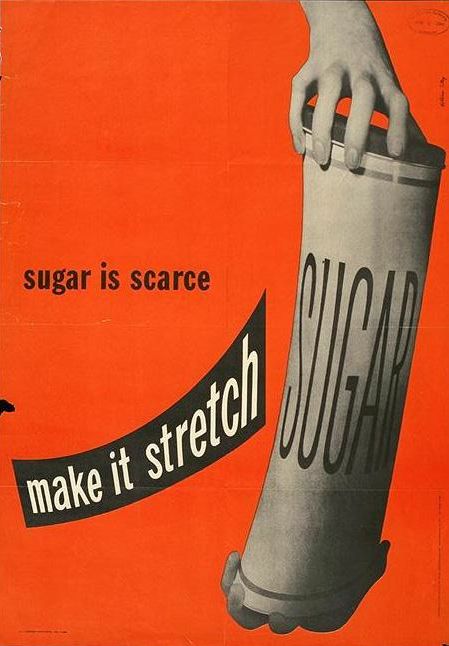
US poster, WWII
When the Japanese conquered the Philippines in the early months of 1942, the United States lost a major source of sugar imports. Shipments from Hawaii and Central and South America had to be curtailed 50 percent as cargo vessels were diverted for military purposes – and due to heavy losses of cargo ships to German U-boats in early 1942. The supply of sugar fell by one-third. To ensure adequate supplies for manufacturers, the military, and civilians, sugar became the first food item to be rationed. Manufacturers initially received supplies at 80 percent of pre-war levels, but that was reduced over time.
Registration for Rationing
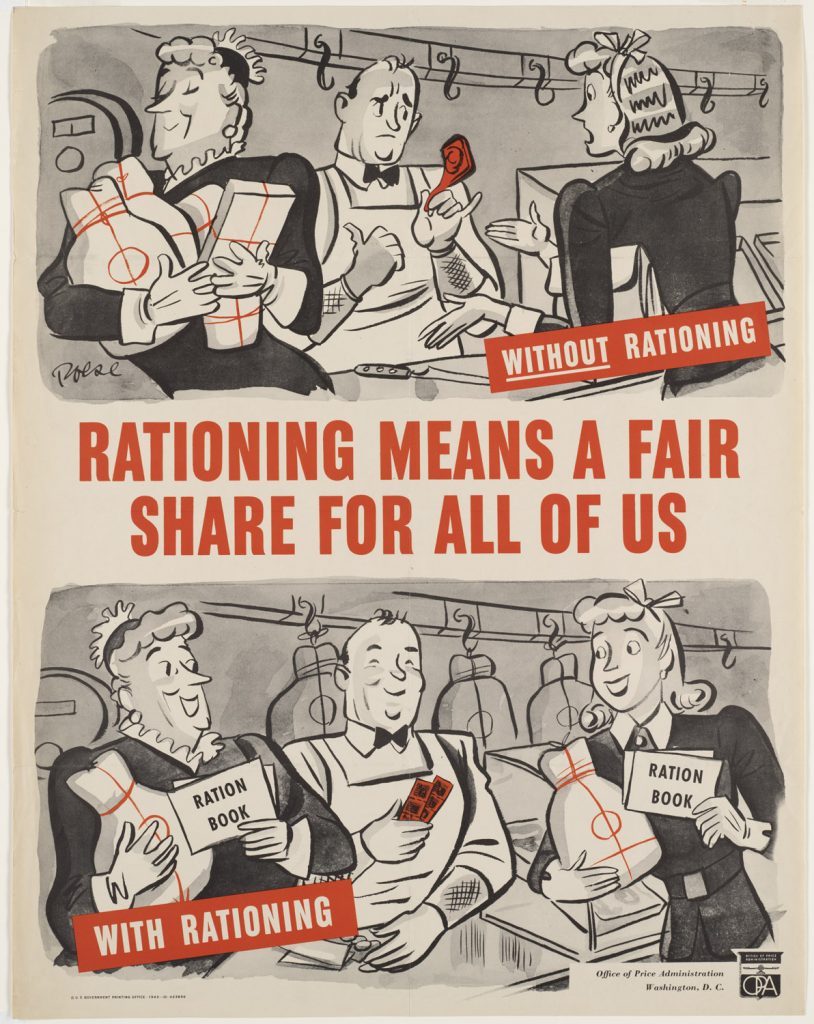
US poster about food rationing, 1943 (US Office of Price Administration)
On April 27, 1942, families registered for ration books at their local elementary schools. One book was issued for each family member and had to be surrendered upon death. The sale of sugar was halted for one week to prepare for the program. To discourage hoarding, each family had to report how much sugar they had in stock over a certain amount – and the corresponding number of stamps was removed from the book. To further prevent hoarding, the sale of sugar was halted for a week.
Ration Books
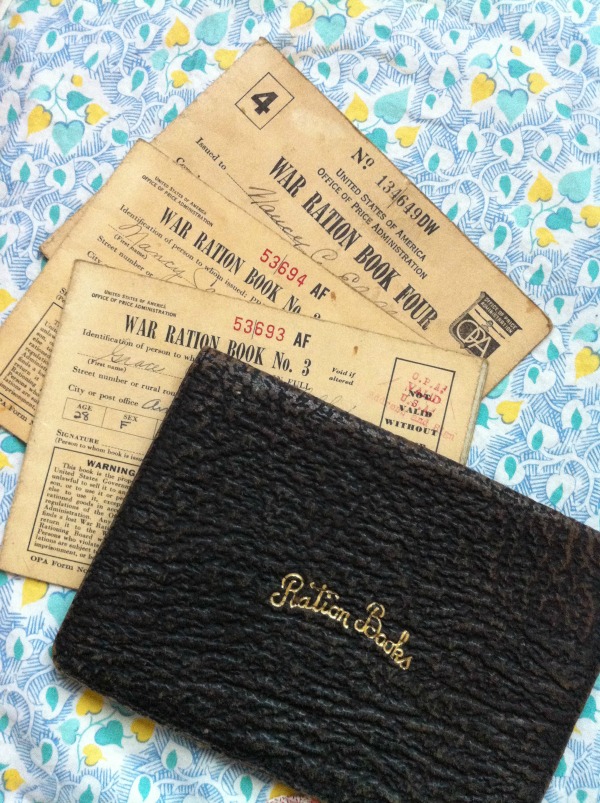
US rationing books owned by my mother and grandmother, WWII (Photo: Sarah Sundin)
On May 5, 1942, each person in the United States received a copy of War Ration Book One, good for a 56-week supply of sugar. Initially, each stamp was good for one pound of sugar and could be used over a specified two-week period. On June 28, 1942, each stamp became good for two pounds of sugar over a four-week period. The ration book bore the recipient’s name and could only be used by household members. Stamps had to be torn off in the presence of the grocer.
If the book was lost, stolen, or destroyed, an application had to be submitted to the Ration Board for a new copy. When entering the hospital for greater than ten days, the ration book had to be brought along.
On September 12, 1943, War Ration Book Three became active, replacing both Book One (sugar & coffee) and Book Two (meats, cheeses, canned & processed foods, and butter & cooking oil). War Ration Book Four replaced Book Three on November 1, 1944.
Canning
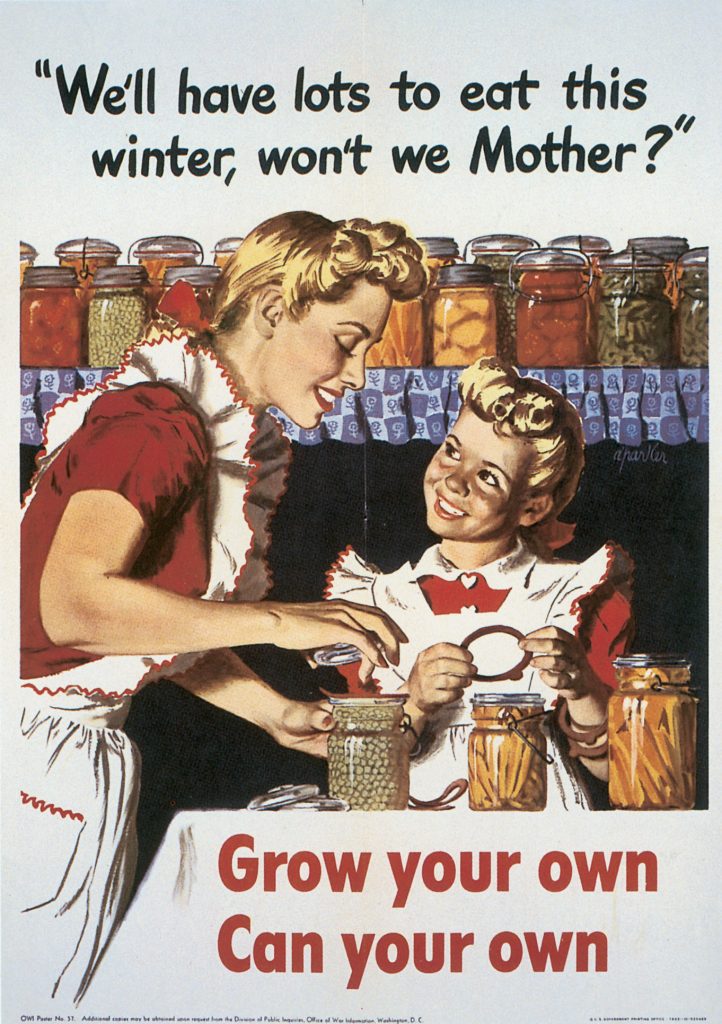
US poster promoting canning, 1943
Home canning was encouraged during the war to reduce the use of rationed canned fruits and vegetables – however, canning requires sugar. To provide for this patriotic need, each person could apply for a 25-pound allotment of canning sugar each year. Each local ration board determined the quantity and season of availability based on the local harvest. A special canning sugar stamp in the ration book had to be attached to the application. In 1944, confusion arose when “spare canning sugar stamp 37” was called for – but many people mistakenly used the regular sugar stamp 37, invalidating it for normal household purchases.
Sugar Shortages
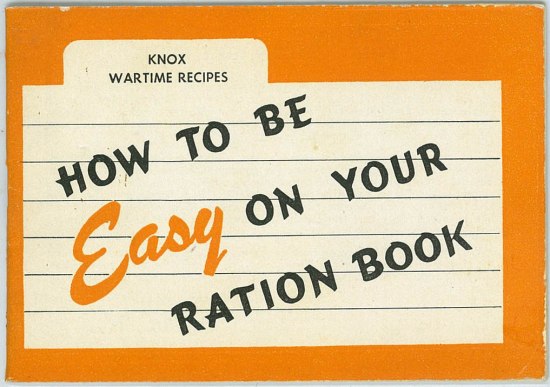
Knox Wartime Recipes: How to be Easy on Your Ration Book, 1943 (Smithsonian)
Just because you had a sugar stamp didn’t mean sugar was available for purchase. Shortages occurred often during the war, and in early 1945 became acute. As Europe was liberated from Nazi Germany, the US took on the main responsibility for providing food to those ravaged countries. On May 1, 1945, the sugar ration was cut to 15 pounds per year for household use and 15 pounds per year for canning – a total of eight ounces per week.
Sugar was the last product to remain on rationing after the war. The program was discontinued in June 1947.
Housewives learned to be creative, using saccharine, corn syrup, and even packets of flavored gelatin as sugar substitutes. Women’s magazines featured recipes with reduced sugar or creative substitutes.
Do you have any stories of wartime sugar rationing?


[…] Sugar rationing begins in the US (See Make It Do: Sugar Rationing in World War II). […]
I was 8 when WWII started and I remember my mom and grandma saving sugar to have enough to can the fruit from our trees and to make jams. It is interesting to read exactly how it all existed as I only have a childs remembrance. What I remember most was the lack of chocolate candy. Once the man who lived next door gave my mom a milky way chocolate bar, she sliced in pieces so we each could have some.
I love these stories!
My mother canned veggies and fruits. When my mother passed away, one of my brothers showed us her ration book. That was very interesting to see.
What a treasure!
I have my grandmother’s Gold Medal Cookbook with a with an added wartime baking with tips on how to bake bake with rationing in mind!!
What fun!
[…] Sugar rationing begins in the United States (Read more: “Make It Do—Sugar Rationing in World War II.”) […]